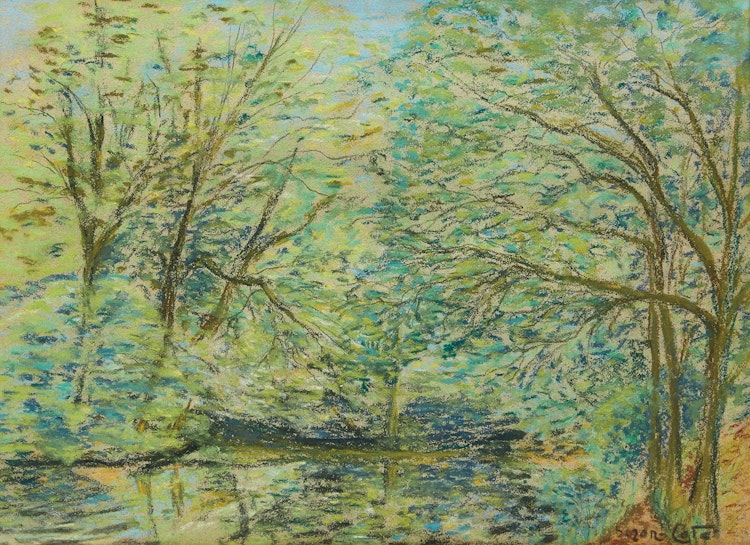Spring Trees on the Yamaska by Marc-Aurèle de Foy Suzor-Coté

Marc-Aurèle de Foy Suzor-Coté
Spring Trees on the Yamaska
pastel
signed lower right
11.5 x 15.5 ins ( 29.2 x 39.4 cms )
Zwicker’s Gallery, Halifax
Roberts Gallery, Toronto
Private Collection, Toronto
Laurier Lacroix, “Suzor-Coté: Light and Matter”, National Gallery of Canada, Ottawa, 2002, page 198
The undulating hilly topography of Yamaska National Park in Quebec is a reminder of its close proximity to the Appalachians, with rock breaking through the surface of the mature forests surrounding the Réservoir Choinière. “Spring Trees on the Yamaska’s” gentle landscape, loose brushwork, intricate detail of the leaves on the trees and soft colours showcase Suzor-Coté’s abilities - a forceful Impressionist style that became quintessential to the artist’s oeuvre.
Share this item with your friends
Marc-Aurèle de Foy Suzor-Coté
(1869 - 1937) RCA
Suzor-Coté was born in 1869 in the village of Arthabaska, Quebec. Although the young Marc-Aurèle de Foy Suzor-Coté excelled in both musical and artistic pursuits, his love of painting won precedence and he travelled to Paris in 1891 for three years of art studies at the École de beaux-arts. He returned to North America briefly, pursuing commission work, before returning to Europe for an extended period between 1897 and 1907.
By 1906 he had left behind the academic realism of his early work, developing instead a bold impressionistic style. Once back in Canada he found his greatest inspiration in the Canadian landscape itself. He painted landscape in a forceful impressionistic style which was unfamiliar to Canadian audiences of the time.
The multi-talented Suzor-Coté was also easily able to make the shift from painting to working in three dimensions. His bronzes were cast in New York at the Roman Bronze Works, and became sought after by collectors in Canada and the United States. Suzor-Coté won the Jessie Dow prize for best painting at the Art Association of Montreal in 1914 and again in 1925. By 1925, he had made a significant contribution to impressionism in Canada, influencing younger artists to paint the Canadian landscape in a new manner.

